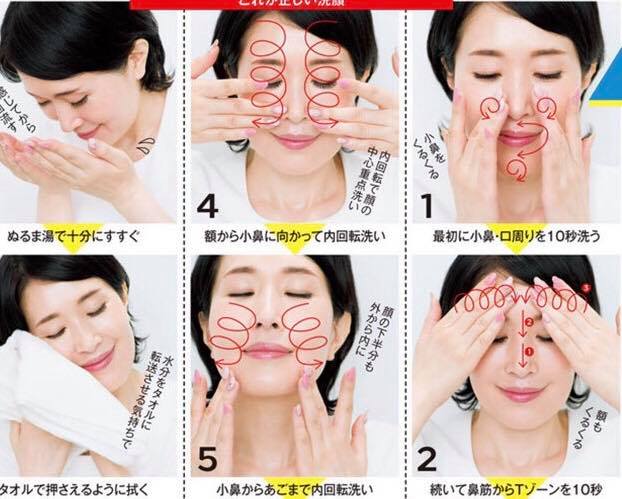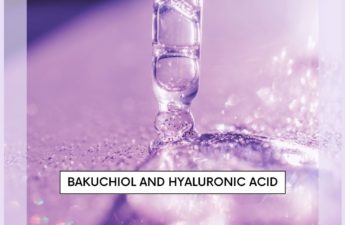K-beauty
K-beauty stands for Korean beauty and it is growing strong. The beauty industry in Korean is extremely fast-paced and constantly changing because of Korean high standards of beauty. Korean women are putting twice their time and effort to make sure they have flawless skin with or without makeup. As a result, k-beauty companies have to step up their games, constantly developing and improving their products to accommodate the market needs.
Examples of Kbeauty Brand
- Laneige
- Iope
- Sulwhasoo
- The History of Whoo
- Su:m37
- AHC
- Nacific
- Innisfree
- Mamonde
- CNP Laboratory
J-beauty
Even though J-beauty sounds less familiar to the western beauty industry, you should not underestimate the trend. From powder cleanser to sunscreen, the Japanese certainly created their perfect blends of skincare products. Japanese women are particular and selective when it comes to skincare. Hence, j-beauty is just as innovative and technologically advanced as k-beauty.
Examples of J-Beauty Brand
- SK-II
- Shiseido
- Kanebo
- Hada Labo
- Shu Uemura
- Pola
- Kose
- Albion
- Three
- Fancl
What Are The Differences?
- skin goal
- K-beauty skincare routine vs. J-beauty skincare routine
- Korean skincare products vs. Japanese skincare products
- skincare ingredients
- innovations
Skin Goal
As we all know, Koreans are obsessed with fair and glowing skin. Their skin goal is to have dewy and flawless skin, a glass skin that glows from within. Besides, Korean love to have their skin to be as fair as possible. Beauty salons in Korea provide different solutions from beauty products to injections for white and pale skin. Dewy and glowing skin is also one of the main focus. It is different from greasy and oily skin, just healthy and dewy skin that glows like clear glass.
Related Article: Why Korean Have Pale Skin
View this post on Instagram
On the other hand, Japanese strive for having clear and translucent skin. They embrace different skin tones and complexion, though fair and white skin is still highly desirable. Therefore, Japanese skincare products focus on hydration, spots treatment, and anti-aging to keep skin soft and supple. They prefer a no-makeup makeup look that lets the skin see-through and as clear as possible.
View this post on Instagram
Skincare Routine
When it comes to K-beauty skincare routine, forget about less is more. We are not talking about 5 or 6 products, it’s a 10 steps skincare regime.
K-beauty skincare routine starts with double cleansing which is removing your makeup first then wash your face with your regular cleanser. Then follow by exfoliator, toner, essence, serum, mask, eye cream, face cream, and sun protection.
It’s a huge commitment (especially for a lazy girl)! Korean believe in layering different types of skincare products will create a natural barrier and keep your skin hydrated and moist.
On the other hand, J-beauty stands by the simplicity of the skincare routine. Similarly, it starts with double cleansing, removing all the impurities then clean your skin thoroughly. Next, toner, serum, and face cream. Last but not least, sunscreen for the day. In most cases, Japanese only exfoliate and apply face masks once or twice a week.
Double Cleansing & Sun Protection
Both of K-beauty and J-beauty firmly believe that cleansing your skin is crucial for healthy skin. It clears all the dirt, grime, and impurities from your skin. When your skin is thoroughly clean, problems like acne and clogged pores will less likely occur on your skin. In addition, your skincare products will penetrate better and deeper into your skin and contribute a better result on your skin.
Related Article: Why You Should Try Japanese Sunscreens
Related Article: Affordable Japanese Sheet Masks For Dry Skin
Korean love face masks & Japanese love toners
It’s obvious that Korean love face masks, every type of face masks. You can easily be overwhelmed by the choices of Korean face masks. Clay masks, overnight masks, sheet masks, lip masks or eye mask, you name it, and you can find multiple choices in k-beauty. J-beauty love sheet masks as well, however, face toner comes first. Japanese layer toners on their skin, therefore, face toner is a product they will invest their money in.
When Applying Skin Care Products…
Korean prefer to pat their skincare products until they are fully absorbed into the skin. Koreans reportedly have a higher percentage (56.8%) of sensitive skin compared to other races. (source) By gently patting the product, you are creating less friction on your skin. Thus, you will not risk causing more irritation or discomfort on the skin.

On the contrary, Japanese enjoy applying skincare products with a face massage. They believe that massage can loosen up face muscles and give you a more firm and define face shape. Moreover, massaging your face helps the products penetrate faster and blood circulation. As a result, a defined face and radiance complexion.
Skincare Products
Next, let’s talk about skincare products. Skincare products play a vital role in keeping skin hydrated and moisturized. Both countries have strong background and leading technology to keep up with the fast-paced beauty industry. Apart from that, both countries have really high beauty standards that companies constantly invent new beauty products that work effectively.
Packaging
K-beauty is unquestionably strong when it comes to marketing their products. Due to high competition, beauty companies are spending money to make sure their products are carefully researched to meet the market’s needs. Thus, you can spot fancy and colorful packaging for most skincare products to stand out from the competitions.
View this post on Instagram
Oppositely, J-beauty appreciates the simplicity of the packaging. Most products have timeless and minimal packaging. Most come in a neutral color tone such as beige or white. Furthermore, Japanese are vastly environmentally conscious. In Japan, every household sorting their own rubbish and recycle all their waste.
View this post on Instagram
Formulation
When it comes to create and formulate a product, k-beauty is predominantly focused on ingredients in the products. Like we mentioned above, Koreans are prone to skin sensitivity, many of them have learned to read the label to lower the risk of getting irritations on the skin. Hence, beauty companies are creating products that will soothe and relieve sensitive skin.
J-beauty pays close attention to the texture of the product when they create a product. In Japan, seasons change distinctively. It could get cold and dry in the winter but hot and humid in the summer. J-beauty products generally have a lightweight texture but still delivers great results to the skin.
Specialty
Due to the differences and preferences of the people, both industries have invented skincare products that specifically for the people and the environment.
PM2.5
Air pollution has become one of the biggest concerns in Korea as the levels of pm2.5 keep raising each year. Fine particles and dust have affected skin, health and even caused death. K-beauty has a bunch of products for air pollution-related problems. For instance, the Anti-Gravity cream from Huxley and Jayjun Anti-dust Therapy Mask.
Related Article: Anti-pollution Skin Care: 4 Facial Masks to Protect Your Skin From Pollution
Pollinonsis
On the other hand, Japan is known for the grand cherry blossom season. The government has been mass planting cherry blossoms in different cities to attract millions of tourists each year. As a result, the blooming season of cherry blossoms has caused many people suffering from pollinosis. Pollinosis is an allergic reaction caused by the plant’s pollen. D program has a series of products are designed to create a barrier to shield skin from pollens and dust.
Texture
Skincare product texture means a lot when it comes to the products apply directly to your skin. K-beauty products generally have a thicker texture and ‘greasier’ (especially night cream) because of Korea winter weather is long and cold. The dry wind blows together with the dust and pollutants. For that reason, Korean women prefer to have thicker cream to protect their skin from cold and dry weather.
On the contrary, J-beauty products often formulate in a featherweight texture that easily penetrates and absorbs by the skin. Even though Japan has four seasons, spring and summer are humid and warm. Thus, j-beauty products have a less heavy texture, such as gel or lotion type moisturizer. They can always apply multiple layers if they want extra hydrations.
Ingredients
Let’s discuss k-beauty vs. j-beauty skincare ingredients. Both of them have some notable ingredients and some not so good ones.
K-beauty products are mostly infused with plant extracts such as ginseng, green tea, and rose. Plant extracts are commonly found in skincare products like essence and face mask. Though these ingredients are beneficial for the skin, take note on the ingredient list of each product. Some of the products only contain a very low percentage of it, and the main ingredients are mostly chemical.
Look out for ingredients like fragrances and shimmering fine particles. Korean products are heavily infused with fragrances to keep the product smells good. However, if you are sensitive to fragrances, you might want to think again before you make any purchase. In addition, be aware that some sunscreens and moisturizers contain really fine shimmering particles that will make your skin look more dewy and glowy.
View this post on Instagram
J-beauty products develop their products mostly with traditional ingredients such as rice extract, barley, and sake. For instance, the main ingredient of SKII treatment essence actually comes from rice water. Rice water is full of minerals, antioxidants, and vitamins that will improve signs of aging and skin texture. In addition, ingredients like hyaluronic acid and arbutin are just as common. These ingredients are found in toner, essence or moisturizer to boost your skin hydration and even up skin tone. Japanese is not overly obsessed with the idea of dewy skin, but want their skin to be clear, soft and supple.
Be aware of the percentage of alcohol in skincare products especially in the face toner. Alcohol is a common ingredient to use in skincare products. While people with oily skin and acne-prone skin might get benefit from it, it often caused discomfort and irritation on sensitive skin.
Innovation
We can’t finish the article without talking about the innovative products that both countries have made for the consumers.
With the everlasting change in K-beauty market, beauty companies constantly have to be more open-minded and innovative while creating a new skincare product. As we all know, k-beauty products are always evolving. Skincare ingredients such as snail mucin and snake venom are both originated from Korea and it’s still favored by a lot of beauty enthusiasts. Apart from that, k-beauty also comes up with completely fresh and new idea that changed the beauty world. For example, the concept of BB cushion and sleeping/overnight masks that are now used by different big brands such as Estee Lauder and M.A.C.
View this post on Instagram
You may think J-beauty is incomparable with the fast-paced K-beauty market but this is not the case at all. People tend to overlook the fact that J-beauty actually invented some very impressive beauty tools. These products such as hairdryer, face massager, facial steamer and more! For instance, Panasonic hairdryer with nanoe technology that will draw moisture to your hair while drying your hair and ReFa Carat face roller that won Cosme award No.1 is designed to allow you to massage your face with the right amount of pressure just like you are using your own hands. It stimulates blood circulation and leaves your skin feels rejuvenated and lifted.
So which sides are you on? K-beauty or J-beauty? Share your thought with us down below. We’d love to hear all your opinions!


